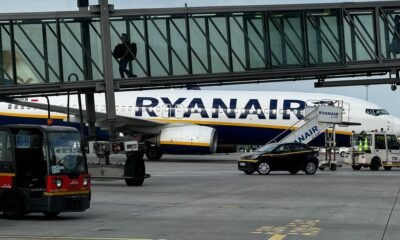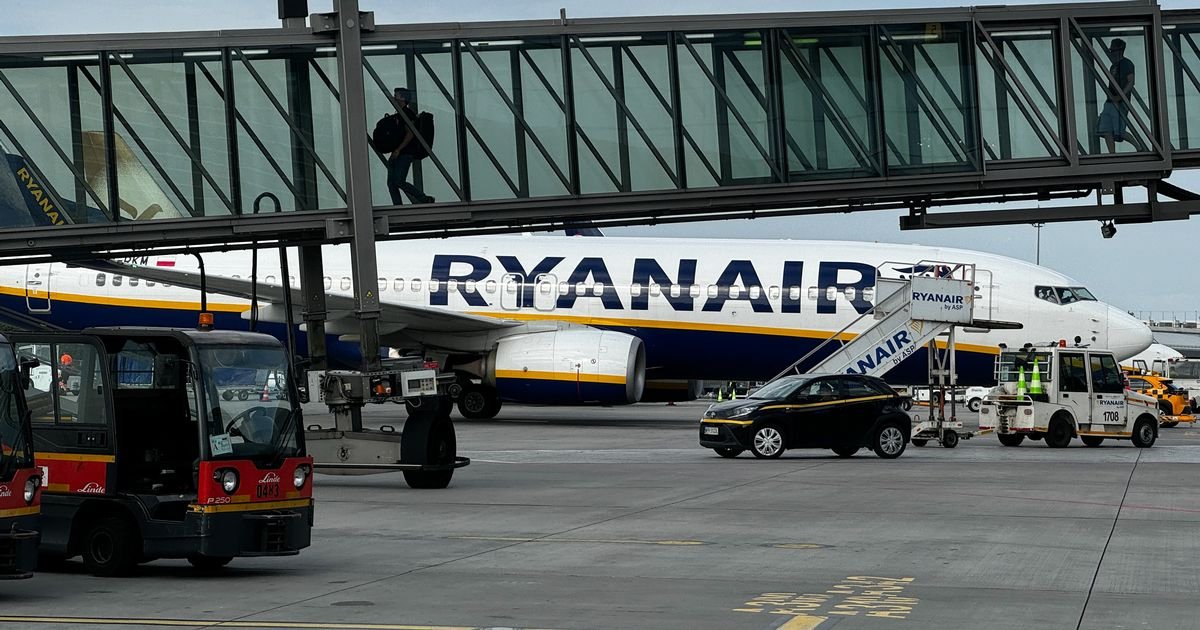WASHINGTON, DC (December 11, 2024) – AAA projects 119.3 million people will travel 50 miles or more from home over the year-end holiday period* from Saturday, December 21 to Wednesday, January 1. This year’s domestic travel projection narrowly surpasses the previous record set in 2019 by 64,000 travelers. AAA expects an additional 3 million travelers this holiday season compared to last year.
“This is the time of year when lifelong memories are made with loved ones, and travel plays a big role in that,” said Stacey Barber, Vice President of AAA Travel. “This year, with Christmas Day falling on a Wednesday, we’re anticipating record-breaking travel numbers the weekend before and the weekend after the holiday.”
Year-End Travelers by Mode
By Car: Nearly 90% of holiday travelers will be driving to their destinations, making it the most popular way to travel. 107 million people are expected to travel by car, and while that number is 2.5 million higher than last year, it’s shy of 2019’s record of 108 million. Many travelers, particularly families with young children, prefer the flexibility and lower cost that road trips provide. This holiday season, gas prices are lower than last year, when the national average was around $3.12 in the last two weeks of 2023. Gas demand in December goes down as the weather gets colder, more people work remotely, and holiday shoppers purchase their gifts online versus in person.
AAA car rental partner Hertz says Denver, Las Vegas, Los Angeles, Miami, Oahu, Orlando, Phoenix, and Tampa are the cities displaying the highest rental demand for the holidays. The busiest car pick-up days are expected to be Friday, December 20 and Saturday, December 21. The busiest time for rental returns is expected to be the weekend and Monday after Christmas. The average length of rental is one week.
By Air: AAA expects air travel to set a new record this holiday season with 7.85 million passengers. That number surpasses the previous record of 7.5 million air travelers last year. AAA booking data shows flights are 4% more expensive this holiday season compared to last year. The average domestic ticket is $830. International flights are 13 % more expensive, averaging $1,630 a ticket.
By Other Modes: The number of Americans traveling by bus, train, and cruise this holiday season is up nearly 10% compared to last year. AAA expects 4.47 million people will travel by other modes. That number is the highest it’s been in 20 years. Domestic cruise bookings are up 37% compared to last holiday season. Cruising is popular this time of year as many families enjoy celebrating the holidays aboard a ship full of activities and food.
AAA’s Road Trip Safety Tips
With an additional 2.5 million travelers expected on the roads during this year-end holiday travel period, AAA urges drivers to prioritize safety with the following tips:
Follow Posted Speed Limits: While it’s tempting to speed to save time, the facts don’t support it. Even minor increases in speed can make crashes deadly.
- Driving 80 mph instead of 75 mph over 100 miles saves only 5 minutes, hardly worth the risk.
- Speeding may feel faster but often leads to tragedy.
Drive Only When Alert and Refreshed: Driving on 4-5 hours of sleep is as dangerous as driving with a 0.08 BAC (legal intoxication). Less than 4 hours of sleep? The risk doubles.
- Travel during hours you’re normally awake and avoid overnight drives.
- Steer clear of heavy meals, drowsy medications, and alcohol.
- For long trips, take breaks every 2 hours or 100 miles. Use these breaks to switch drivers if possible, or park at a safe location and nap for 20-30 minutes to recharge.
Slow Down, Move Over: A roadside worker is killed every other week in the U.S. To help prevent these tragedies, AAA asks drives to Slow Down, Move Over.
- When you see an emergency responder on the side of the road assisting a stranded driver, reduce your speed.
- If possible, change lanes to give those crews room to do their jobs safely.
- All 50 states and the District of Columbia have Move Over laws in place.
Best/Worst Times to Drive and Peak Congestion by Metro
INRIX, a provider of transportation data and insights, expects drivers will experience the worst traffic delays the weekends before Christmas Day and New Year’s Day. The holidays themselves are expected to have minimal congestion. Drivers in Boston, New York City, Seattle, and Washington, DC could see double the typical delays. Nationwide, travel times could be up to 30% longer.
“With a near record number of auto travelers expected this holiday season, drivers should expect delays in and around major metro areas, with Sunday, December 22 expected to be the nation’s worst day to travel,” says Bob Pishue, transportation analyst at INRIX. “Our advice is to avoid traveling during peak commuting hours during the week. If schedules allow, leave bright and early or after the evening commute.”
Please note that the times listed below are for the time zone in which the metro is located. For example, Atlanta routes = ET and Los Angeles routes = PT.
|
Best and Worst Times to Travel by Car
|
| Date |
Worst Travel Time |
Best Travel Time |
| Thursday, Dec 19 |
3:00 – 8:00 PM |
Before 11:00 AM |
| Friday, Dec 20 |
1:00 – 8:00 PM |
Before 11:00 AM |
| Saturday, Dec 21 |
4:00 PM – 8:00 PM |
Before 2:00 PM |
| Sunday, Dec 22 |
3:00 PM – 8:00 PM |
Before 12:00 PM |
| Monday, Dec 23 |
1:00 – 6:00 PM |
Before 11:00 AM |
| Tuesday, Dec 24 |
Minimal Traffic Impact Expected |
|
| Wednesday, Dec 25 |
Minimal Traffic Impact Expected |
|
| Thursday, Dec 26 |
12:00 PM – 5:00 PM |
Before 11:00 AM |
| Friday, Dec 27 |
3:00 PM – 7:00 PM |
Before 2:00 PM |
| Saturday, Dec 28 |
1:30 PM – 7:00 PM |
Before 11:00 AM |
| Sunday, Dec 29 |
12:00 PM – 6:00 PM |
Before 11:00 AM |
| Monday, Dec 30 |
5:00 PM – 7:00 PM |
Before 2:00 PM |
| Tuesday, Dec 31 |
Minimal Traffic Impact Expected |
|
| Wednesday, Jan 01 |
Minimal Traffic Impact Expected |
|
| Thursday, Jan 02 |
4:00 PM – 8:00 PM |
Before 3:00 PM |
|
Peak Congestion by Metro
|
| Metro |
Route |
Peak Congestion Period |
Est. Travel Time |
Increase Compared
to Typical
|
| Atlanta |
Atlanta to Augusta
via I-20 E
|
Sunday 22nd
1:45 PM
|
2 hours
54 minutes
|
38% |
| Boston |
Boston to Hyannis
via Pilgrim Hwy S
|
Friday 20th
3:45 PM
|
2 hours
24 minutes
|
100% |
| Chicago |
Chicago to Milwaukee
via I-94 W
|
Sunday 22nd
4:45 PM
|
2 hours
2 minutes
|
69% |
| Denver |
Fort Collins to Denver
via I-25 S
|
Sunday 29th
1:00 PM
|
1 hour
31 minutes
|
67% |
| Detroit |
Detroit to Cleveland
via I-75 S
|
Monday 23rd
4:30 PM
|
3 hours
23 minutes
|
36% |
| Houston |
Lafayette (LA) to Houston
via I-10 W
|
Friday 27th
5:45 PM
|
4 hours
54 minutes
|
53% |
| Los Angeles |
Los Angeles to Palm Springs
via I-10 E
|
Sunday 22nd
7:45 PM
|
2 hours
53 minutes
|
81% |
| Minneapolis |
Eau Claire to Minneapolis
via I-94 W
|
Sunday 29th
4:30 PM
|
1 hour
54 minutes
|
46% |
| New York |
New York to Hamptons
via Long Island Expy E
|
Sunday 22nd
4:30 PM
|
2 hours
39 minutes
|
108% |
| Philadelphia |
Philadelphia to Baltimore/DC
via I-95 S
|
Sunday 22nd
4:45 PM
|
2 hours
4 minutes
|
40% |
| Portland |
Portland to Eugene
via I-5 S
|
Sunday 22nd
3:45 PM
|
2 hours
23 minutes
|
50% |
| San Diego |
San Diego to Palm Springs
via I-15 N
|
Friday 20th
6:15 PM
|
3 hours
7 minutes
|
35% |
| San Francisco |
San Francisco to Napa
via I-80 E
|
Saturday 21st
7:30 PM
|
2 hours 2 minutes |
82% |
| Seattle |
Seattle to Ellensburg
via I-90 W
|
Friday 20th
7:00 PM
|
3 hours
18 minutes
|
106% |
| Tampa |
Gainesville to Tampa
via I-75 S
|
Saturday 28th 10:30 AM |
2 hours
54 minutes
|
53% |
| Washington, DC |
Washington, DC to Annapolis
via US-50 E
|
Thursday 19th
4:30 PM
|
1 hour
17 minutes
|
160% |
Source: INRIX
AAA’s Top Holiday Destinations
The top holiday destinations listed below are based on AAA booking data from December 21, 2024 to January 1, 2025. Tropical weather destinations top the list as many people head to beach resorts and head on cruises to end the year. The charming Southern cities of Charleston and New Orleans are also on the top 10 domestic list. In addition to Caribbean destinations, Bahrain finds itself in the top 10 international list thanks to its popular cruise port, pleasant weather, and rich history.
| DOMESTIC |
INTERNATIONAL/CARIBBEAN |
| ORLANDO, FL |
PUNTA CANA, DOMINICAN REPUBLIC |
| FORT LAUDERDALE, FL |
MEXICALI, MEXICO |
| MIAMI, FL |
CANCUN, MEXICO |
| ANAHEIM/LOS ANGELES, CA |
BAHRAIN, BAHRAIN |
| TAMPA, FL |
PUERTO VALLARTA, MEXICO |
| LAS VEGAS, NV |
SAN JOSE, COSTA RICA |
| HONOLULU, HI |
SAN JUAN, PUERTO RICO |
| CHARLESTON, SC |
NASSAU, BAHAMAS |
| NEW ORLEANS, LA |
ORANJESTAD, ARUBA |
| NEW YORK, NY |
LONDON, ENGLAND |
Holiday Forecast Methodology
Travel Forecast
In cooperation with AAA, S&P Global Market Intelligence (SPGMI) developed a unique methodology to forecast actual domestic travel volumes. The economic variables used to forecast travel for the current holiday are leveraged from SPGMI’s proprietary databases. These data include macroeconomic drivers such as employment, output, household net worth, asset prices, including stock indices, interest rates, housing market indicators, and variables related to travel and tourism, including gasoline prices, airline travel, and hotel stays. AAA and SPGMI have quantified holiday travel volumes going back to 2000.
Historical travel volume estimates come from DK SHIFFLET’s TRAVEL PERFORMANCE/MonitorSM. The PERFORMANCE/MonitorSM is a comprehensive study measuring the travel behavior of U.S. residents. DK SHIFFLET contacts over 50,000 U.S. households each month to obtain detailed travel data, resulting in the unique ability to estimate visitor volume and spending, identify trends, and forecast U.S. travel behavior, all after the trips have been taken.
The travel forecast is reported in person-trips. In particular, AAA and SPGMI forecast the total U.S. holiday travel volume and expected mode of transportation. The travel forecast presented in this report was prepared the week of November 4, 2024.
Because AAA forecasts focus on domestic leisure travel only, comparisons to TSA passenger screening numbers should not be made. TSA data includes all passengers traveling on both domestic and international routes. Additionally, TSA screens passengers each time they enter secured areas of the airport, therefore each one-way trip is counted as a passenger tally. AAA focuses on person-trips, which include the full round-trip travel itinerary. As a result, direct comparisons of AAA forecast volumes and daily TSA screenings represent different factors.
Year-End Holiday Travel Period
For this forecast, the year-end holiday travel period is defined as the twelve-day period from Saturday, December 21 to Wednesday, January 1. AAA’s year-end holiday travel period can range from 10 to 13 days, depending on which day of the week Christmas and New Year’s Day fall. This year’s holiday travel period is two days longer than last year. While a longer holiday travel period can offer more options for departures and return trips, all the year-end holiday periods contain two weekends.
About AAA
Started in 1902 by automotive enthusiasts who wanted to chart a path for better roads in America and advocate for safe mobility, AAA has transformed into one of North America’s largest membership organizations. Today, AAA delivers exceptional roadside assistance, helps travelers plan their dream vacations and adventures, offers exclusive member discounts and benefits, and provides trusted financial and insurance services – all to enhance the life journey of our 65+ million members across North America, including nearly 58 million in the United States. To learn more about all AAA offers or become a member, visit AAA.com.
About S&P Global
S&P Global (NYSE: SPGI) provides essential intelligence. We enable governments, businesses, and individuals with the right data, expertise, and connected technology so that they can make decisions with conviction. From helping our customers assess new investments to guiding them through ESG and energy transition across supply chains, we unlock new opportunities, solve challenges, and accelerate progress for the world. We are widely sought after by many of the world’s leading organizations to provide credit ratings, benchmarks, analytics, and workflow solutions in the global capital, commodity, and automotive markets. With every one of our offerings, we help the world’s leading organizations plan for tomorrow today. For more information, visit www.spglobal.com.
About DKSA
DK SHIFFLET boasts the industry’s most complete database on U.S. resident travel both in the U.S. and worldwide. Data is collected monthly from a U.S. representative sample, adding over 60,000 traveling households annually, and is used daily by leading travel organizations and their strategic planning groups. DK SHIFFLET is an MMGY Global company.
About INRIX
Founded in 2004, INRIX pioneered intelligent mobility solutions by transforming big data from connected devices and vehicles into mobility insights. This revolutionary approach enabled INRIX to become one of the leading providers of data and analytics into how people move. By empowering cities, businesses, and people with valuable insights, INRIX is helping to make the world smarter, safer, and greener. With partners and solutions spanning across the entire mobility ecosystem, INRIX is uniquely positioned at the intersection of technology and transportation – whether it’s keeping road users safe, improving traffic signal timing to reduce delay and greenhouse gasses, optimizing last mile delivery, or helping uncover market insights. Learn more at INRIX.com.




































